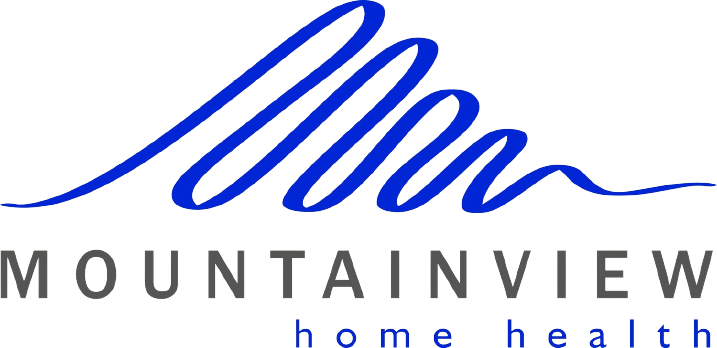Introduction;
As we all are usually familiar with the term SLP, a ‘Speech Language Pathologist’, most people still don’t really know what is included in the responsibilities and concerns of any SLP who works in home health. This article reflects the daily workings and routine of SLPs rendering services in the home health sector particularly.
Preparing For the Work Day;
The first thing for SLPs is to log into the online agency management program that their organization utilizes for paperwork at home. The rehab and medical teams are rarely present in the same location at the same time to discuss patient care due to the nature of home healthcare. Therefore, in order to stay informed about patient condition, progress, difficulties, and changes, SLPs rely on each other's prompt, complete recording. After checks for any new orders or messages it’s helpful to look through recent notes from the different medical specialties caring for patients already on the list.
Depart For the First Visit/Consultation;
It’s important, prior to leaving the house for the first patient, to check in with the agency manager about the details of the patients assigned. SLPs employed by any organization usually serve a vast geographic area, some even frequently visiting three or four different counties in a single day. The majority of the patients are and should be ideally between thirty to forty minutes' travel. While I'm traveling, Some SLPS plan and make notes for their speech therapy sessions that day, which is helpful.
Aphasia Treatment;
If the first patient is a stroke survivor who is very young, has high receptive language skills, and moderate expressive language impairment then we should follow some typical treatment procedures. We could start by using text-to-speech technology to supplement the patient’s verbalizations since he/she has trouble finding the right words. Although this makes it easier to discover words on a single level, it prevents that patient from coming up with lengthier phrases using Tobii Dynavox, a text-based communication device for which we are preparing a financing proposal. The focus in this session is on having the patient repeat 4-word sentences and adding articles and prepositions to his/her impromptu one-two word utterances.
Time & Travel Management between Visits;
An SLP usually has around an hour between two patients, which should be utilized to mentally process the first patient's visit and get ready for the second patient's appointment. Reviewing notes right after the session and panning for the nest one is really helpful in giving the professional edge an SLP requires.
Aphasia Therapy;
For example, the next patient is an elderly stroke survivor with aphasia who has a substantial problem with expressive language but decent receptive language skills. Primary means of communication are yes/no questions and facial gestures, although the patient has been acquiring some sentence scripts that he/she can produce on his/her own or with little assistance. The SLP should put emphasis on reading 4-5 word sentences aloud and writing the alphabet despite the fact that the patient is reluctant to use any other expressive communication techniques save oral speaking. During the whole session, it’s essential the SLP bonds with the patient at his/her level of communication.
Driving Time & Meals Allocation;
Mentally process and get ready for what’s next while you have your meals. Professional SLPs frequently use this time to document the findings and reports for earlier patients and also have a quick review of the details of patients ahead. If an SLP chooses his/her own schedule, it’s alright to skip the scheduled lunch break to complete the day more quickly and hurry home, but most SLPs typically make a quick stop in a secure parking lot or somewhere to eat a cold lunch maybe and check the mail or any other correspondence. Having a quick meal helps boost your energy and assists you function better.
Treatment for Swallowing;
If it’s a residential care facility where any of your patients resides, you have to be punctual about that visit. Usually you will find patients there who are being admitted to the hospital for dehydration and "altered mental status”, and mostly they just recently came back home. Doctors will most likely prescribe syrups that are honey-thick, a very thick viscosity that is worrying given the patient’s history of dehydration.
To find out if a swallow study had been performed, the SLP calls the hospital. The call not only confirms that but also it's crucial to take the time to get in touch with the patient's previous SLP to further know about the history of that patient. The SLP then will write a new diet prescription after successfully experimenting with nectar-thick beverages to take the upgrading into consideration. This is when the patient is tolerating the normal thin drinks that the SLP tested with no aspiration problems or indicators.
Quick Stop by the Office;
If close by, a drop by at the home care office of the employer is good for the SLP. The SLPs can use the restrooms, freshen up or fill their bottles with water etc. Furthermore, the SLP can also drop off the paperwork that needs to be scanned and uploaded to the patients' online charts.
Education for Swallowing;
Maybe there is an extremely elderly patient who resides in a senior living high-rise is one of the patients for the day. The SLP must check with the agency program to see whether the necessary documentation has already been completed. Usually a physical therapist has seen the patient there every time since the patient’s accident and has finished the required paperwork. The SLP then suggests a pureed diet for the patient in case he/she has trouble swallowing soft meals. During the session, the SLP also must show the patient’s guardian or attendant how to purée her meal, for example meat in the blender, which the patient can subsequently eat effectively and safely.
Time to Go Home;
After traveling many miles that day to see the patients, the SLP is advised to stop at the gas station to refuel for the next day, so there will be no hassle in the morning. Anything needed in the morning from stationary to patient’s requirements must also be obtained in the evening before or while going home. This makes for a good and professional SLP.
Document Record-Keeping & Scheduling;
When I go home, I plan my patients for the next day, coordinate visits with other specialties as necessary, and finish my paperwork, which isn't too time-consuming today because I didn't have any new assessments, discharges, or OASIS Medicare forms to finish.
A Day's Work of Home Health;
Even if an SLP just sees four to five people in a day, it’s really exhausting as it also includes driving so much. If the SLP is able to complete all of the appointments, it is considered a good day. There are days when a patient cancels or is rushed into the hospital, which completely messes up the schedule, maybe because patients are spread out so far apart or have different time of the day. An SLP should enjoy working with patients in their residential homes or facilities on a regular basis. He/She must be eager to learn and encourage carryover, despite the special challenges that come with working in home health.



